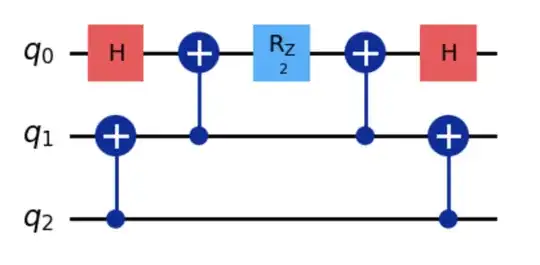I have the following code block implementing $e^{-itP}$ where $P$ is a Pauli string:
import matplotlib.pyplot as plt
import qiskit
from qiskit.quantum_info import Pauli
from qiskit import QuantumCircuit
from qiskit.circuit.library import PauliEvolutionGate
from qiskit.transpiler.passes import Decompose
circuit = QuantumCircuit(3)
operator = "ZZX"
gate = Pauli(operator)
evo = PauliEvolutionGate(gate, time=1)
circuit.append(evo, range(3))
circuit.decompose().draw('mpl')
The output of the circuit is given below 
If I compare the circuit generated by Qiskit with the algorithm described this post, then, I am a bit confused. I expected Qiskit to apply the $ \sigma_z $ rotation operator on qubit $ q_2 $, followed by the CNOT gates on $ q_{0,1} $ and $ q_{1,2} $. What is happening? Is there a way to instruct Qiskit to implement the gates in the specified order?